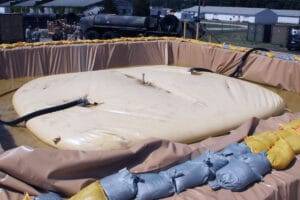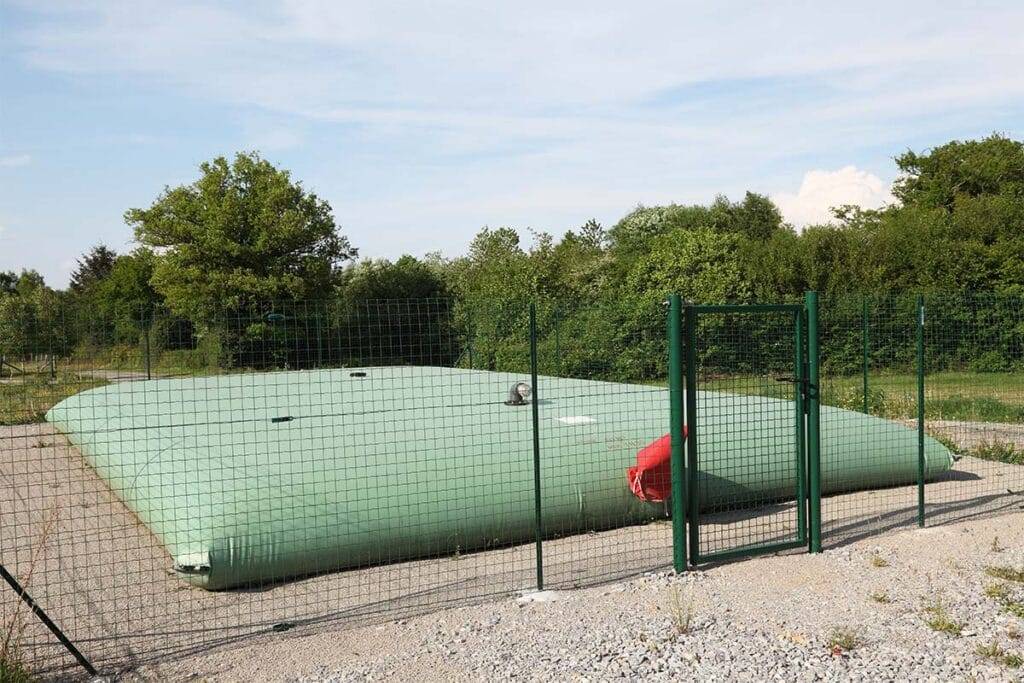Professional tanks for storing drinking water are essential in facilities and locations facing temporary or permanent shortages in water supply. Additionally, storing water in this way adhere to strict design, installation and execution principles. What should be considered to ensure that a drinking water tank meets all the key requirements?
Storing drinking water is crucial in various facilities where reserve tanks are mandated by law. It is also important in locations such as desert roads, where they provide vital support for drivers in case of emergencies. Water, essential for human life, has a specific expiration date and should be stored in accordance with guidelines set by food safety authorities. Therefore, the material used and the tightness of the structure created are extremely important.

Rules for storing drinking water
Tanks for drinking water and other food liquids should be manufactured and used based on a strict set of rules. The location must be chosen so that the water is situated in a shaded area, sheltered from direct exposure to the sun’s rays. The material for food liquid tanks is quite versatile, with many solutions easily adaptable to current needs and requirements. These tanks are both leak-tight and lightweight, which facilitates transportation. Additionally, they can be recycled as the material is adapted accordingly for this purpose.
Tanks can also be manufactured from tarpaulin material, which is effective, for example, on desert roads and in places where maintaining the liquids in the proper condition for an extended period is crucial. However, the application of tanks should not be limited solely to these aspects.
Another important aspect of water storage is proper maintenance. While there are no clear guidelines as to how long the liquid in the container can be used without any problems and when it should be replaced, we can adopt a general principle to replace it – primarily for quality control – every six months. Otherwise the risk of the water becoming unsafe for consumption increases. Of course, containers for drinking water can- and indeed should- be refreshed using water treatment agents that effectively removes bacteria from the water.

How are water tanks manufactured?
Tanks for drinking water are, in the vast majority of cases, made using higher-strength plastic materials, as they must account for the above-average pressure and spreading force characteristic of liquids. If the water tank is relatively small, it’s possible to construct it using a single piece of material that is welded or stitched during the forming process. However, it’s different when using large and long straps that create the water tank only after being joined. In this case, the challenge lies in the precise connection of these strips to ensure that the resulting material is durable enough to withstand the weight of the liquid and gravitational forces.
The production of water tanks undoubtedly requires the use of of high-quality specialized machinery. Tarpa PRO is a prime example- an automated traveling head high frequency welder designed for PVC film. It works excellently in the production of large-scale technical fabric structures using cyclic linear welds. These are crucial for joining multiple elements into one durable surface.
Among other applications, it is used for manufacturing tents, banners, water dams, tarpaulins, covers, and flexible water tanks. These products are known for their high durability while being significantly more flexible in use compared to standard plastic containers.
It’s important to highlight the production capabilities of Tarpa PRO. The worktable of this device can have a length of up to 100 meters, consists of sections of 800 mm each. On a single track, there can be two synchronized welding heads complementing each other. In practice, this translates into excellent functionality for the production of, for instance, exceptionally large tanks designed for water storage. Using magnets to secure the workpiece during welding allows for convenient handling and trouble-free positioning of long elements. When production involves large surfaces for a sizable tank, easy handling of huge pieces of material is crucial. This directly impacts the ability to create durable and secure welds. Considering the significant pressure exerted by water, the final product’s quality plays a particularly important role.


